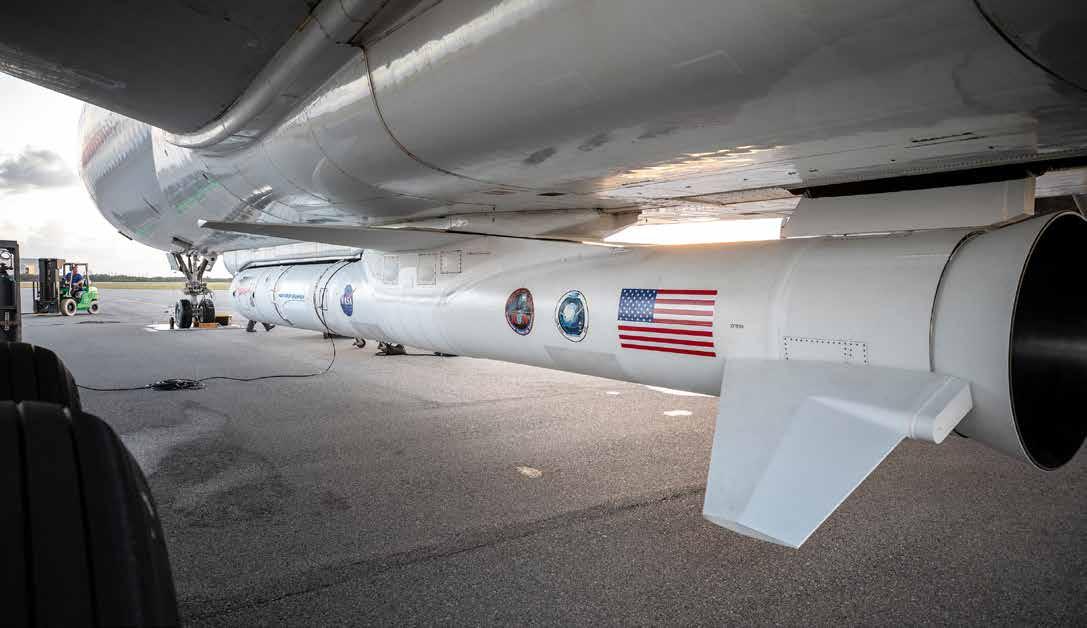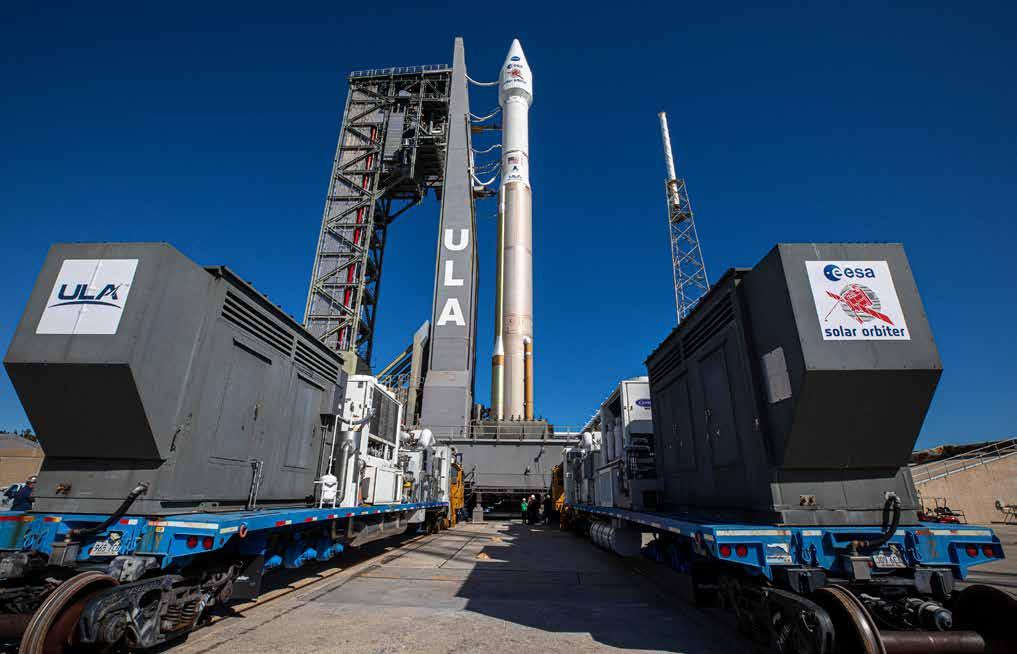
4 minute read
Launch Services Program
NASA's Launch Services Program (LSP) is skilled at connecting payload entities with launch vehicle providers. LSP works to provide reliable, competitive, and user-friendly launch services in the commercial arena to satisfy agencywide space transportation requirements and maximize the opportunities for mission success. Launch Services Program supports NASA’s return to the Moon. For NASA’s Artemis architecture, LSP is serving in a major consulting role for the Gateway Logistics Element, the Human Landing System, the Habitation and Logistics Outpost, and the Power and Propulsion Element; as well as providing mission management to deliver the Canadian Deep Space Exploration Robotic System to the Gateway. The team also is leveraging its expertise in the Venture Class Launch Services for precursor lunar CubeSat missions to reduce technical risk in advance of crewed Artemis campaigns. LSP launched three missions in fiscal year 2020: Ionospheric Connection Explorer (ICON), which studies the charged particle layer where Earth’s weather meets space weather, launched Oct. 10, 2019, on a Northrop Grumman Pegasus XL rocket from Cape Canaveral Air Force Station (CCAFS); Solar Orbiter, an international cooperative mission between
The Northrop Grumman Pegasus XL rocket carrying NASA’s Ionospheric Connection Explorer (ICON), seen attached beneath the company’s L-1011 Stargazer aircraft, arrived at Cape Canaveral Air Force Station on Oct. 1, 2019.
Advertisement

Backdropped by a twilight sky, Northrop Grumman's L-1011 Stargazer undergoes final preparations prior to its takeoff from Vandenberg Air Force Base in California on Oct. 1, 2019. The company's Pegasus XL rocket, containing NASA's ICON spacecraft, is seen attached beneath the aircraft. Photo credit: U.S. Air Force 30th Space Communications Squadron

the European Space Agency and NASA to study the Sun, launched Feb. 9, 2020, on a United Launch Alliance (ULA) Atlas V rocket from CCAFS; and Mars 2020, NASA’s Perseverance Mars rover, launched July 30, 2020, on a ULA Atlas V rocket from CCAFS. NASA awarded three missions during the fiscal year: Geostationary Operational Environmental Satellite-T (GOES-T), which will provide advanced imagery and atmospheric measurements of Earth’s weather, oceans and environment, real-time mapping of total lightning activity, and improved monitoring of solar activity and space weather, is targeted to launch in December 2021 aboard a ULA Atlas V 541 rocket; the Psyche mission, which will journey to a unique metal-rich asteroid, also named Psyche, orbiting the Sun between Mars and Jupiter, is targeted to launch in July 2022 on a SpaceX Falcon Heavy rocket; and the Plankton, Aerosol, Cloud, ocean Ecosystem (PACE) mission, which will provide global ocean color, cloud, and aerosol data about Earth’s changing climate, is targeted to launch in December 2022 on a SpaceX Falcon 9 Full Thrust rocket. LSP will manage the launch services for all three missions launching from Florida. The program supports the agency’s CubeSat Launch Initiative (CSLI) by providing dispenser hardware and mission integration services to CubeSat Inside Kennedy’s Payload Hazardous Servicing Facility, the Backshell-Powered Descent Vehicle and Entry Vehicle assemblies are prepared to be attached to the Mars Perseverance rover on May 4, 2020.
development teams from educational institutions, non-profit organizations, and NASA centers. LSP also manages Educational Launch of Nanosatellites (ELaNa) missions, launching complements of small satellites, known as CubeSats, selected for flight by CSLI. In fiscal year 2020, 16 CubeSats were launched during four missions: ELaNa 25A in November 2019, ELaNa 25B and 28 in December 2019, ELaNa 30 in February 2020, and ELaNa 31 in September 2020. LSP’s Hangar AE, located at CCAFS, supported a total of 21 launches. These included launches for NASA’s Commercial Resupply Services, which replenish the International Space Station; NASA’s Commercial Crew Program’s SpaceX Demo-2, which was the first crewed test flight of the Crew Dragon spacecraft; the Department of Defense; and commercial companies. Hangar AE also supports the Commercial Crew Program and Space Launch System teams by documenting communication and telemetry requirements.
A United Launch Alliance Atlas V rocket lifts off from Cape Canaveral Air Force Station’s Space Launch Complex 41 on July 30, 2020, carrying NASA’s Mars Perseverance rover and Ingenuity helicopter.

The United Launch Alliance Atlas V rocket carrying the Solar Orbiter spacecraft arrives at the launch pad at Cape Canaveral Air Force Station’s Space Launch Complex 41 on Feb. 8, 2020. This is a view inside the United Launch Alliance payload fairing as it is secured around the Solar Orbiter spacecraft on Jan. 20, 2020, inside the Astrotech Space Operations facility in Titusville, Florida. Photo credit: European Space Agency/Airbus


Workers watch from the Atlas Space Operations Center as the United Launch Alliance Atlas V rocket with the Solar Orbiter spacecraft climbs upward after liftoff from Space Launch Complex 41 on Cape Canaveral Air Force Station on Feb. 9, 2020.









